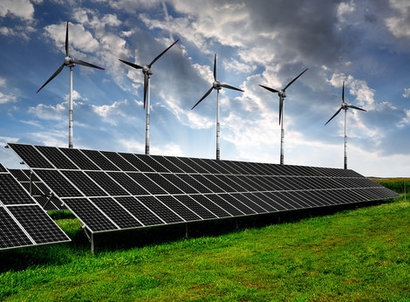
The next decade is vital to develop, prove and commercialise low carbon technologies, says the ETI. The UK must demonstrate ‘at scale’ the impact that integrating new technologies will have. By the mid-2020s, the UK must make important decisions about its energy infrastructure which will shape how people use power, heat homes and fuel cars in the future. It recommends the use of a whole energy system approach to deliver on the Government’s Clean Growth Strategy, developing a mix of low carbon technologies to meet future emissions reduction targets.
A whole energy system approach means developing a portfolio of options for clean energy in all its various uses (electricity, heating and transport), and crucially by fitting them together in the best combinations to deliver value for business and consumers.
The ETI has released a number of new documents this week, including data sets and project reports from its Whole Energy Strategy Analysis programme, which will provide a central focus at the organisation’s 10 Years of Innovation conference in London next month. The ETI believes these documents can help inform the debate on how to deliver the new strategy. ETI believes that no single technology is the answer to decarbonisation and that a whole energy system analysis is vital in developing a complementary mix of key technologies to reduce emissions across multiple sectors.
The way in which the choices made in one form of energy affects what needs to happen elsewhere needs to be understood. For example decisions taken affecting electricity will impact what happens to heat and transport. Through a decade of research the ETI has been able to demonstrate how a whole energy system approach will help sectors to better understand the impact and implications of activity across inter-connected energy systems.
The ETI welcomed last week’s publication of the Clean Growth Strategy and the clear commitment to cutting emissions that it signals. It believes that as the UK moves into the next phase of clean energy development, it needs a balanced portfolio of investment. The publication of the Clean Growth Strategy signals the needed investment in infrastructure, which will take a generation to implement. The strategy therefore needs to be used as the framework in order to make decisions fast and commit to making it happen.
For ten years the ETI has been building capability in whole energy system modelling and analysis that can operate at international, national and local levels. Ending in 2019, the ETI has secured the future of its Strategic Analysis Function (SAF) by transferring the capability to the Energy Catapult System (ESC). The ESC is part of the government’s Catapult network and will focus on helping UK innovators to unlock value from the transition to a low-carbon energy system. As part of the transfer agreement the team will provide consultancy services as a project partner to the ETI as it completes its portfolio of energy innovation projects and analysis.
“To effectively decarbonise by 2050 and provide clean, affordable, secure energy, whole systems analysis is important to help innovators identify and unleash opportunities” said Jo Coleman, Director, Strategy Development. “We are not talking about new revolutionary ideas, rather developing, commercialising and integrating the known but underdeveloped technologies. The UK must look to renew and transform its energy infrastructure, but it’s important to do this efficiently so that consumer bills are kept at an affordable rate and ensure our industries remain competitive. If policies are reliable and reward real emissions reductions, then the power of innovation can deliver the right mix of investment in low carbon energy infrastructure for the future”.
Ms Coleman added that the next decade is vital in order to develop, prove and commercialise low carbon technologies, new commercial propositions, supply chains and business models, but the UK needs to act now. As part of the ESC, SAF will continue to work with government, industry and academia on energy systems modelling, analysis and design to explore innovative decarbonisation models across electricity, heat and transport to help deliver on the ambitions of the Clean Growth Strategy. The integration of new technologies and business models will also need to be demonstrated at scale to examine the impact on consumers. A ‘learn by doing’ approach will allow for testing the underlying value of an innovation and its potential role.
On the 21st November, the ETI will be showcasing the potential of the whole energy system approach at its 10 Years of Innovation conference and exhibition. Joined by participants from Utrecht University, Drax, KPMG, Aurora Energy Research and Frontier Economics, the ETI will debate the role of whole energy system planning to deliver affordable and clean energy in the UK.
For additional information:

